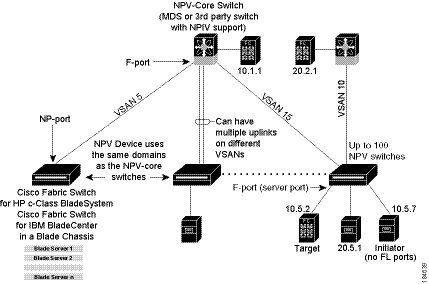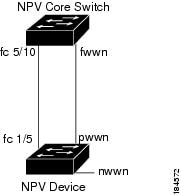Feature History for N Port Virtualization
This table lists the New and Changed features.
|
Feature Name |
Release |
Feature Information |
|---|---|---|
|
N Port Virtualization (NPV) Load Balancing |
8.5(1) |
NPV load balancing scheme is enhanced to propose a mapping of server interfaces to external interfaces based on the throughput value so that the traffic can be evenly distributed on the external interfaces. The following commands were introduced:
|
|
N Port Identifier Virtualization |
8.4(2) |
The NPIV feature is enabled by default. |
|
NP Ports |
8.4(1) |
Buffer-to-Buffer State Change Notification (BBSCN) allowed on NP Ports |




 Feedback
Feedback